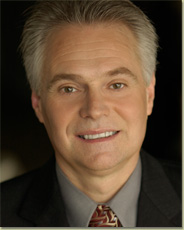The three things a CEO can do to help Sales. Tips from a CEO
1. Hire the right kind of sales people at the right time. Don’t hire salespeople too early in your growth. Wait until you have learned what is needed from several customers and you can determine a repeatable, proven series of steps to follow to bring in the right kind of customers. If you don’t do this, you will frustrate and lose the “coin operated” sales guys. If you are in a very early stage looking for your first customers and have yet to “know†your repeatable method to use to capture sales you need a more consultative, “Business Development”
resource vs. a salesperson.
Different stages of commercial development, different industries, different distribution models need different types of selling. Understand your requirements and target your recruitment accordingly. Some sales guys are sniffers, some are killers, some are missionaries. But don’t think solving your “sales problem†requires you to just “hire a sales guy.â€
2. Use a simple consistent sales process/system. Explore inexpensive, open source automation solutions in the early stages (e.g.,sugarcrm.com.) One size of sales process does not fit all sales models. Keep it simple
3. You can manage activity, not results. When you measure, use metrics that are shared by the sales and marketing team. The entire team has to buy into the same numbers. Top down metrics do not work. So concentrate on finding with the team the activities that will move sales forward. Then, measure and review them regularly.
Tips from Paul Maurer, CEO of Actenum to the Rocket Builders Go2Market Program (RocketAcademy) on May 16th 2007
Category: Management, Sales
45% of all sales leads turn into a sale
45% of all sales leads turn into a sale. So says Jim Obermayer, Inquiry handling systems. Sales people believe that only 10% of leads turn into a sale….because they stop following after 90 days. Great sales people follow every lead until it dies. After six months a lead still has a 50% chance of converting. Yet over 50% of leads are not followed up!
Colin McWhinney and Paul Maurer both stated at the Rocket Builders GoToMarket sales process session yesterday (www.rocketacademy.com) that the majority of prospects do not decide on your desired timeline.. You must adjust your process to their time frame.
Colin stated that studies show that most sales long term come from companies who were not classified as “Hot Leads†on first pass, but were qualified. In order to do this your sales process must nurture the relationship with relevant material and contact based on their response at a relatively low cost. Both Paul and Colin agreed that a salesman is a high cost person to put on lead nurturing program., whereas this is part of the of marketing role to manage the lead nurturing process.
•
Category: Sales, Strategy, Technology Industry
Why companies hire outside experts (part 3 of 3)
What to look for when hiring an outside consultant.
Domain Knowledge. Experts have some domain knowledge but not too much.
- Having too much can often lead to the consultant maybe believing they know what you are all about before ever talking to you, a major anchoring bias.
- Second, they may lose objectivity by selling exactly the same solution their last client bought, an extreme anchoring bias.
- Third, their expertise may be so tightly limited to a single industry that there is no opportunity for you to receive the benefit of parallels in other industries and well-managed firms with innovative channels of distribution.
- Fourth if they do derive a unique, new solution for you, rest assured they will let the industry know the key to your program.
Structure. What is needed to make major business decisions is structure. A structured and efficient approach to a problem attends to the important specifics of a particular business or market and leads to a solution.
- The structure the consultant uses is most often revealed through his or her questions.
- The second task of the questioning process is to determine the range of existing frames for the problem within the organization.
- The third task is to find what the organization knows about the problem. Even more importantly, there is a need to find out what the organization doesn’t know about the problem.
- Finally, the objective in questioning is to break the problem down. This is called the “decomposition principalâ€. Reasonable and workable estimates of difficult, unknowns can be obtained if the problem can be broken apart with knowledge of the structure of the metrics of interest. Experts accomplish the effect of decomposition by constructing process models, on the spot, to drive home the structure of the questions.
With thanks to Harold Gutovich for sharing the core of this material for us.
Category: Leadership, Management
Robert’s Rules of Writing. 101 Unconventional Lessons. Robert Masello
Robert’s Rules of Writing. 101 Unconventional Lessons. Robert Masello. ISBN 1582973261. His most recent on writing. I had reviewed his Writer Tells All. Enjoyable read in that it is short, well organized and eminently useful. His titles are amusing, e.g. Burn your Journal, Skip the Starbucks , Buy the Smoking Jacket and so on. Lesson learned is that prolific and dedicated writers do not “talk” about their work much while it is underway. It seems to interfere with the process and can ultimately prevent completion. I also enjoyed his tips on taking a book apart (one that you enjoyed) to study how the writer captured and kept your interest through various tips. If you love words and what they can do, this is a very rewarding book to read
Category: Technology Industry, Writing



